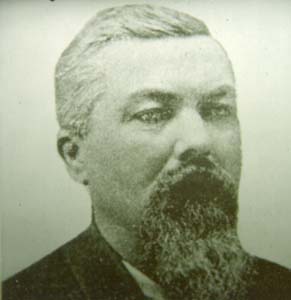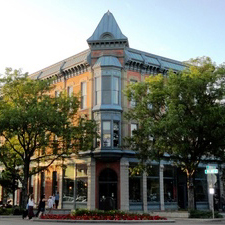News Flashbacks
The State of The City in 1880: Muskrat holes
by Dick Baker
Triangle Review, 1974

Editor's Note: This article is part of a series of 15 articles which will trace the development of Fort Collins and Loveland through "the elegant '80s." The research was compiled by historian Dick Baker, a retired city official whose grandfather was mayor of Fort Collins.
As we start with the year of 1880, the city of Fort Collins fathers (as ever) received their share of attention. An area west of Howes Street and north of Mountain Avenue contained a swamp. The surplus water from this unhealthy body of water made a great deal of trouble for the uptown property owners on the west side of the 100 block of South College Avenue. Mayor Patton and the full board of town trusties visited the area and found that muskrat holes in the town ditch were the source of trouble. All seemed to be happiness when the ditch company promised to repair their ditch. However, this was not all the trouble and I will bet the board knew it. You will learn more about this in this series when later years unfold. Otherwise affairs of Fort Collins looked good. The town between 1870 and 1880 had more than doubled in population. The town now had a population of 1,356 occupying 220 dwellings. There were 236 families. Real estate values had increased-lots that sold from $50 to $75 in 1879 sold for $500 and $800 in 1880.
The post office was made an office of the third class and was moved from the Express newspaper office at 143 Linden Street to a building near the pointed corner where Linden intersects East Mountain. Other events of that year--CSU started its second year with an enrollment of 57 students. The Pleasant Valley Lake and Canal was built bringing over 6,000 acres of land under irrigation in the area west of town. The third newspaper was started, the Temperance Gazette (but it and its' publisher, Reverend Allen, were not popular and it folded within the year.) The wagon of the Hood and Ladder Co. No 1 stood on a vacant lot on Jefferson Street covered with a tarpaulin awaiting final completion of the city hall. The wagon was unwrapped in 1881.
At this time, the town board met at Mason and Hottel's mill. After the disastrous Welch Block fire, much consideration was given toward building a line from Claymore Lake some four and a half miles west of the town. This point was at an elevation of 150 feet above the town and is still the site of a pressure stand pipe for the city. Still good news from the real estate dealers. One realtor reported selling 15 lots on school house street (that would be Remington) in one week at prices ranging from $75 to $150. The "old grout" and lot (corner Jefferson and Linden) had an offer of $6,500 but was being held for $7,500. Luke Voorhies of the Cheyenne and Black Hills stage line was running a six horse stage line from Fort Collins to the mines with stops at Forks Hotel, Livermore House, Elkhorn House and the Rusic.
There were three brickyards in the town going full blast with a production of 35,000 to 50,000 per day. One of these was located at the corner of Myrtle and Peterson. The Tedmon House on Linden and Jefferson was taking a large amount of brick; it being a three-story brick building. The Tedmon House has been covered in this column previously. However, let us state it was opened in April of 1880 and contained ladies parlors, a barbershop and a bar. Every room was connected with an electronic bell to the office; there was a free hack to railroad depot and many other luxuries all for rates of $2.00 to $2.50 per day. Also tasking the brickyards was the building of the opera house block (present Central Block) and the rebuilding of the Welch block after its disastrous fire. Men had been warned all spring about not starting too early in the season to go to the mines. However as soon as the snow melted they rushed and one place they located was Mason City five or six miles west of Cameron Pass. H. P. Handy, the engineer staked, platted and recorded the town. Lulu City was also founded by the Middle Park and Grand River Land Mining and improvement Co.
Mr. B. F. Burnett one of the members of the Co. named the town after his daughter Lulu. They sold 23 lots. Some of the mines were named Diamond Crystal, Silver Star, Tiger and Empire. The road at this time to Lulu was through Estes Park and on July 25 after much backbreaking work Mr. D. M. DeLong took the first wagon into Lulu City. He remarked that there were two grocery stores there and another on the way. The following incident took place at one of the mining towns. John Halligan shot Channcey Bacon. They had been drinking at one of the saloons. Halligan was brought to Fort Collins and charges brought against him. Bacon said if Halligan paid his doctor bill he would not blame him. Justice Cone declared the shooting accidental and discharged the prisoner. Last heard, Bacon, although in a precarious condition, was thought to have a chance of recovery on account of his iron constitution.


Preserving the history of Fort Collins, Colorado & the Cache la Poudre region





